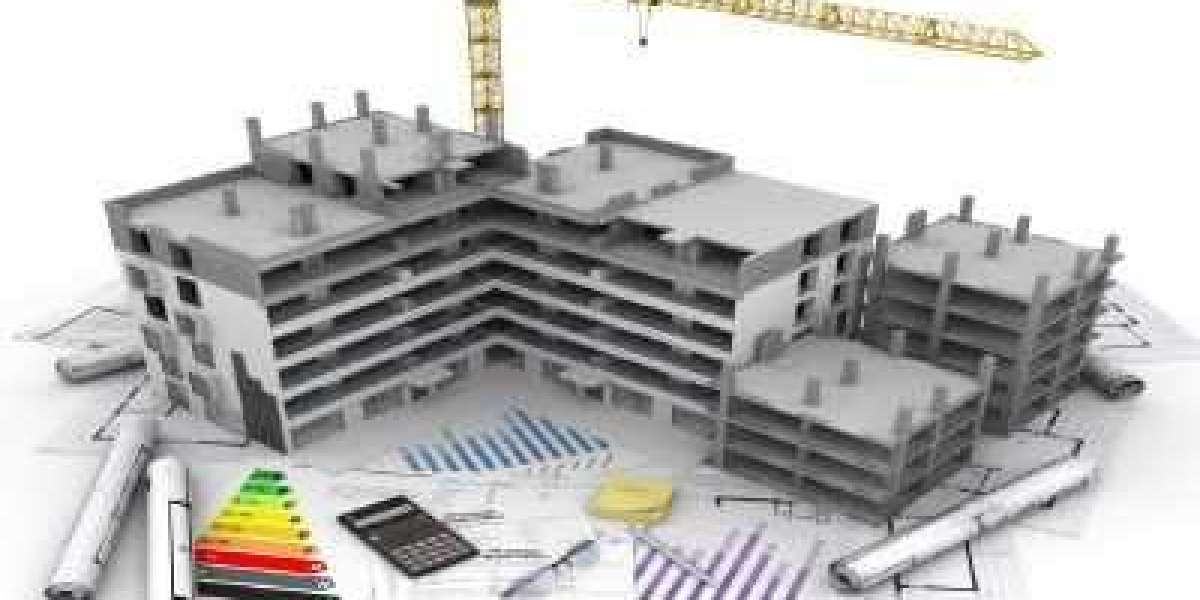In the face of escalating climate change concerns, the building and construction industry is under increasing pressure to meet sustainability standards. As one of the world’s most prominent urban centers, London is committed to reducing its carbon footprint, and the use of SBEM (Simplified Building Energy Model) calculations is one of the key tools driving this transformation. In this blog, we’ll explore why SBEM calculations are essential for sustainable construction projects in London and how they support energy efficiency, environmental responsibility, and regulatory compliance.
What is SBEM?
Before diving into the benefits, it’s important to understand what SBEM calculations entail. SBEM is a methodology used to assess the energy performance of commercial buildings. It calculates the energy efficiency of a building based on its design, materials, heating and cooling systems, lighting, and ventilation. The results are typically used to generate an Energy Performance Certificate (EPC) which shows how well a building performs in terms of energy efficiency.
SBEM calculations are a simplified approach to assessing energy performance, making it more accessible for both small and large construction projects.
The Role of SBEM in Sustainable Construction
SBEM calculations are integral to sustainable construction projects, particularly in urban areas like London, where energy consumption, resource use, and emissions have a significant environmental impact. Let's break down the importance of SBEM in the sustainability of construction projects.
1. Meeting London’s Energy Efficiency Standards
London has set ambitious targets to combat climate change, and one of the primary goals is to reduce the city’s carbon emissions. The UK government’s energy regulations, particularly the Building Regulations Part L, require buildings to meet specific energy efficiency standards. SBEM calculations are used to determine whether a building meets these standards.
- Compliance with Regulations: SBEM helps construction projects adhere to the energy efficiency requirements set by building codes and local regulations in London.
- Carbon Reduction: By evaluating the energy performance of a building, SBEM calculations help reduce overall carbon emissions, aligning with London’s zero-carbon vision.
2. Optimizing Energy Usage
One of the core objectives of sustainable construction is reducing energy consumption. SBEM calculations provide insights into how energy is used within a building and where efficiencies can be made.
- Energy-Saving Design: Through SBEM, designers can identify areas where energy savings can be made in the building’s structure, such as the insulation levels, glazing, and heating systems.
- Optimized Systems: SBEM helps optimize the performance of heating, ventilation, air conditioning (HVAC), and lighting systems, ensuring they use the least amount of energy while maintaining comfort.
3. Supporting Renewable Energy Integration
With a growing emphasis on renewable energy sources, SBEM calculations are also crucial in integrating renewable energy systems, such as solar panels or wind energy, into the building design.
- Renewable Energy Compatibility: By analyzing energy consumption patterns, SBEM can identify the most efficient integration of renewable technologies.
- Maximizing Efficiency: It ensures that renewable energy systems are sized appropriately to meet the building’s needs without overshooting or underperforming.
4. Reducing Operational Costs
Sustainable buildings are not only environmentally responsible but also economically viable. SBEM calculations contribute to reducing operational costs over the building’s lifecycle.
- Lower Energy Bills: By ensuring energy efficiency in the design and operation of the building, SBEM reduces the long-term energy costs for building occupants and owners.
- Return on Investment: Sustainable buildings that meet high energy performance standards tend to attract higher rental yields and resale values, contributing to better returns for developers and investors.
How SBEM Contributes to Building Certifications
In London, green building certifications like BREEAM (Building Research Establishment Environmental Assessment Method) or LEED (Leadership in Energy and Environmental Design) are increasingly demanded by developers, investors, and tenants. SBEM calculations play a significant role in achieving these certifications.
1. BREEAM Certification
BREEAM is one of the most widely recognized sustainable building certifications in the UK. SBEM calculations help buildings score higher by improving their energy performance, reducing environmental impact, and ensuring compliance with regulations.
2. LEED Certification
While LEED is an international standard, it is becoming more prominent in London. SBEM can support projects in achieving LEED credits related to energy and atmosphere, driving further sustainability goals.
The Benefits of SBEM for Construction Projects in London
SBEM calculations provide a clear framework for developers to make informed decisions during the construction and design phases. Below are key benefits for construction projects:
- Improved Energy Performance: SBEM ensures that the building performs optimally, reducing overall energy consumption and environmental impact.
- Regulatory Compliance: Ensures that projects comply with UK regulations, including the Building Regulations Part L.
- Reduced Carbon Footprint: By minimizing energy consumption, SBEM helps reduce the carbon emissions associated with building operation.
- Financial Savings: Sustainable buildings often result in lower operational costs, making them more attractive for investors and tenants.
- Attracting Green Tenants: With an increasing demand for eco-friendly office spaces and residential units, buildings with SBEM certifications are more likely to attract environmentally conscious tenants.
Conclusion
In the context of London’s commitment to a sustainable future, SBEM calculations are more than just a regulatory requirement—they are a vital tool for ensuring that construction projects contribute to the city’s energy goals. By optimizing energy performance, reducing emissions, and supporting the integration of renewable energy, SBEM is essential for creating energy-efficient, cost-effective, and environmentally responsible buildings. As the city continues to grow and adapt to a changing climate, SBEM calculations will play an increasingly important role in shaping the future of sustainable construction in London.
By integrating SBEM into the early stages of design, construction projects can meet both environmental and economic objectives while contributing to London’s vision of becoming a zero-carbon city by 2030.


